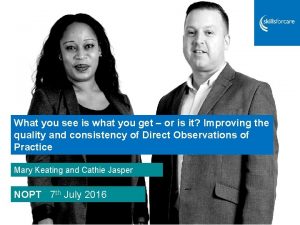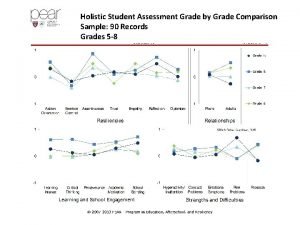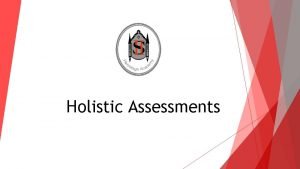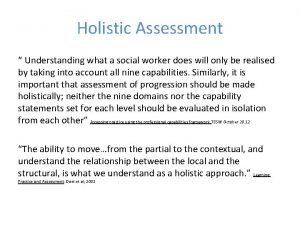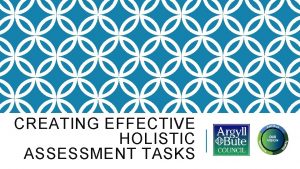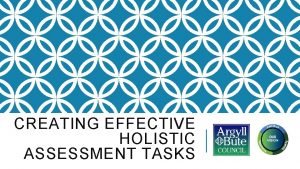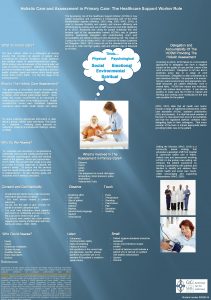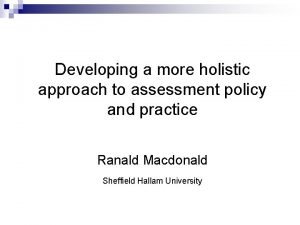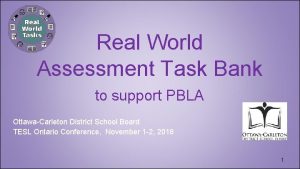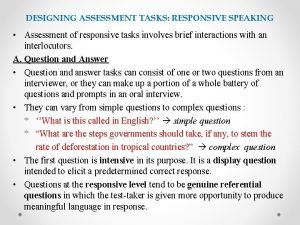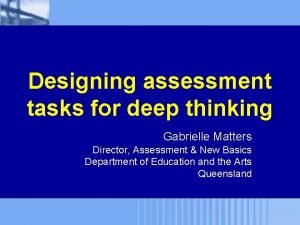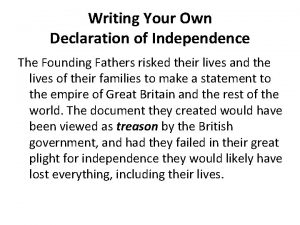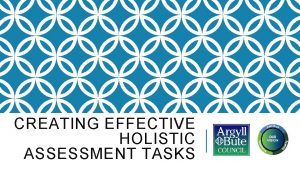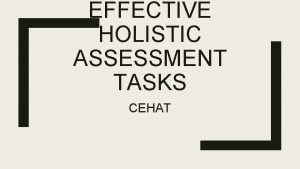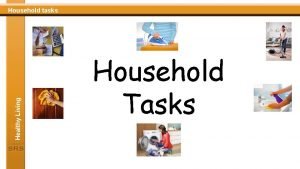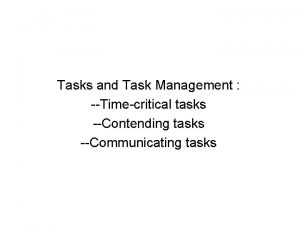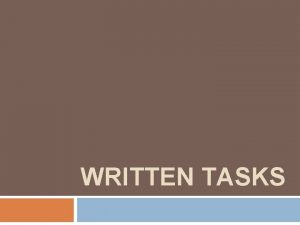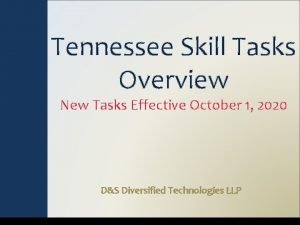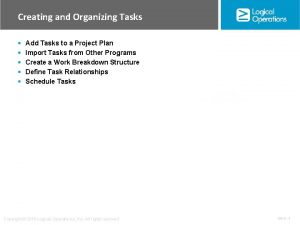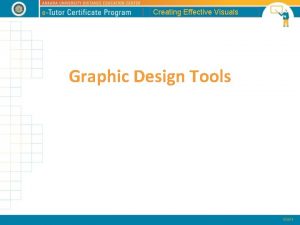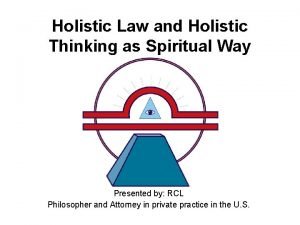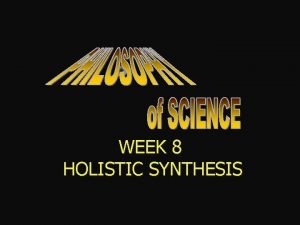CREATING EFFECTIVE HOLISTIC ASSESSMENT TASKS WHAT IS YOUR














- Slides: 14

CREATING EFFECTIVE HOLISTIC ASSESSMENT TASKS

WHAT IS YOUR UNDERSTANDING OF “HOLISTIC ASSESSMENT TASK”?

HOLISTIC ASSESSMENT TASKS Demonstrate breadth of learning – they come from a range of Es and Os across different organisers Demonstrate challenge – they ask pupils to use a range of higher order thinking skills such as analysis, creation, evaluation, problem solving, tackling multi step tasks, interpreting tasks Demonstrate application of learning in new and unfamiliar situations Come from one of the four contexts of learning: Life and ethos of the school as a community Curriculum areas and subjects Interdisciplinary learning Opportunities for personal achievement

WHEN AND HOW SHOULD WE USE HOLISTIC ASSESSMENTS? As pre-assessment to ascertain levels of understanding and/or competency As part of on-going learning and teaching approaches To assess application of knowledge and skills in new and unfamiliar contexts As part of the evidence base for making a professional judgement of achievement of a Cf. E level.

WHY DO WE USE HOLISTIC ASSESSMENTS? Demonstrate genuine understanding of learning Promotes whole school focuses on literacy and numeracy Promotes pupil engagement Gives pupils more independence as learners Enables clearer identification of next steps Fuller range of evidence INCREASE ATTAINMENT

WHAT KIND OF THINGS MIGHT A HOLISTIC ASSESSMENT CONTAIN? Tasks which draw on learning from earlier in the year Tasks which bring in elements of learning from more than one organiser Multi-stage task Tasks which require higher order thinking skills Tasks without too much explicit instruction

NUMERACY EXAMPLE – ST COLUMBA’S In June, P 7/6 will be going to Iona for a day trip to learn about St Columba. There will be 23 children going and 3 adults. We must travel from Oban to Mull by ferry and then we arrive on Mull, we must travel by bus from Craignure to Fionnphort before getting the ferry from Fionnphort to Iona. We must also have time to explore the Iona Abbey before returning to Oban. You must plan our day. This should include when you get up, what time you need to leave your own house and you must ensure that we leave on the ferry from Oban no earlier that 8 am and that we are back in Oban by 6 pm. You must also calculate the average cost person.

DEMONSTRATES BREADTH MNU 2 -10 a MNU 2 -10 c MNU 2 -09 a MNU 2 -02 a MNU 2 -03 a.

DEMONSTRATES CHALLENGE Careful reading of the question to extract the relevant information Problem solving Multi-step question with evaluation Drawing on a range of learning – possibly from throughout the year

DEMONSTRATES APPLICATION Relevant context – a trip that is happening Elements of the question will have been covered previously but this format/combination will be new and unfamiliar. Application of key number skills but without explicit instruction

EXAMPLES OF HOLISTIC ASSESSMENTS LITERACY End of 1 st Level Create a game for the Christmas Fayre and write a clear set of instructions to help others play the game. Design a poster to persuade visitors to the fayre that your game is worth playing! Try each other’s games by reading the instructions provided and choose your favourite, giving a reason for your choice.

THIS IS HOLISTIC BECAUSE… Breadth – comes from a range of organisers (writing and reading) Challenge – requires learners to create, persuade and evaluate Application – using the skills that they have learned in a new context

GROUP TASK 1: CREATE HOLISTIC ASSESSMENTS Select a bundle of Es and Os which reflect the learning happening in the classroom. Create 2 holistic assessments which require: o. The learner to draw on a range of learning o. Appropriate level of challenge o. Higher order thinking skills o. Application of learning in a new and unfamiliar situation o. Come from one of the four contexts of learning

GROUP TASK 2: EVALUATION OF HOLISTIC ASSESSMENTS Now look at the task created by another group. Using the evaluative comment checklist, moderate the effectiveness of this task as a holistic assessment.
 Example of holistic assessment
Example of holistic assessment Pear holistic student assessment
Pear holistic student assessment What are the characteristics of a holistic assessment
What are the characteristics of a holistic assessment Holistic approach social work
Holistic approach social work Example of holistic assessment
Example of holistic assessment Holistic assessment examples
Holistic assessment examples Holistic care assessment
Holistic care assessment Holistic approach
Holistic approach Actilyn
Actilyn Responsive speaking meaning
Responsive speaking meaning Designing assessment tasks
Designing assessment tasks Grade 4 nst practical task term 2
Grade 4 nst practical task term 2 Declaration writing
Declaration writing Give us your hungry your tired your poor
Give us your hungry your tired your poor Guidelines for effective student assessment
Guidelines for effective student assessment
